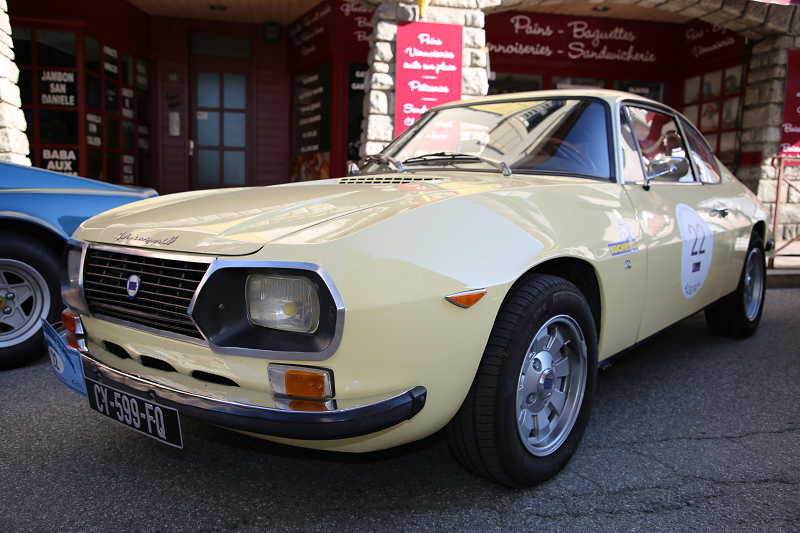The Lancia Fulvia (Tipo 818) is an automobile produced by Lancia between 1963 and 1976. Named after Via Fulvia, the Roman road leading from Tortona to Turin, it was introduced at the Geneva Motor Show in 1963 and manufactured in three variants: Berlina 4-door saloon, 2-door Coupé, and Sport, an alternative fastback coupé designed and built by Zagato on the Coupé floorpan.
The Fulvia’s narrow-angle DOHC Lancia V4 engine was mounted well forward at a 45° angle. A new design, by Zaccone Mina, its unusually narrow 12° V allowed a single cylinder head to cover all the cylinders, with one cam each for intake and exhaust valves.
Displacement started out at just 1091 cc, with a 72 mm bore and 67 mm stroke. Fitted with a single carburettor it produces 58 CV (43 kW; 57 hp). A higher (9.0:1) compression ratio and twin Solex carburettors raised power to 71 CV (52 kW; 70 hp) soon after.
The engine was bored to 76 mm for the 1216 ccHF model. With additional tuning output was raised from 80 to 88 CV (59 to 65 kW; 79 to 87 hp).
Sport
The second series Fulvia Sport was launched at the 1970 Turin Motor Show. Changes included a 5-speed gearbox, revised suspension geometry, taller ride height, an alternator in place of the previous dynamo, a taller final drive compared to coupés, and wider tyres.
The body was now all-steel, and seated 2+2 passengers. Some of the Zagato’s most unusual features were lost: the bonnet was now hinged at the front, and the spare wheel compartment hatch was deleted.
Several other changes set the second series apart from the first: new driving lights, side mirror moved from the wing to the door, larger bullet-shaped tail lights from the Peugeot 204, and stamped steel wheels without hubcaps.
Sport 1600 (Tipo 818.750/751): 1971–72. Top of the range Sport, with 1,584 cc engine from the HF, producing 115 hp (86 kW). With a top speed of 118 mph (190 km/h), this version was the fastest production Fulvia ever produced. The 1600 was distinguished by a matte black radiator grille with chrome edges, black rubber over-riders on the bumpers, a matte black band on the engine bonnet, and new flush door handles. Some of these new fixtures—like the black grille and door handles—found their way on late 1.3 S examples.












